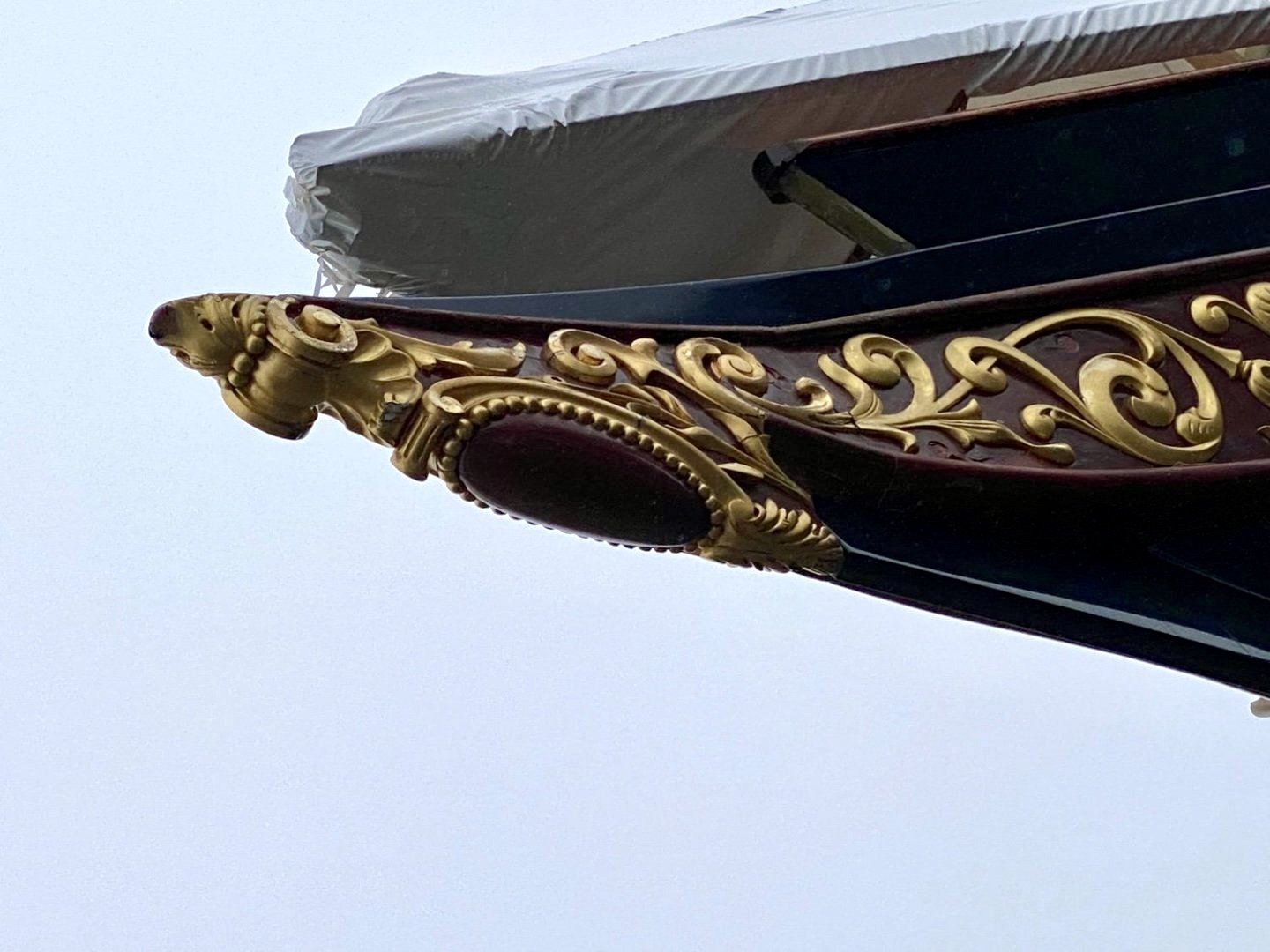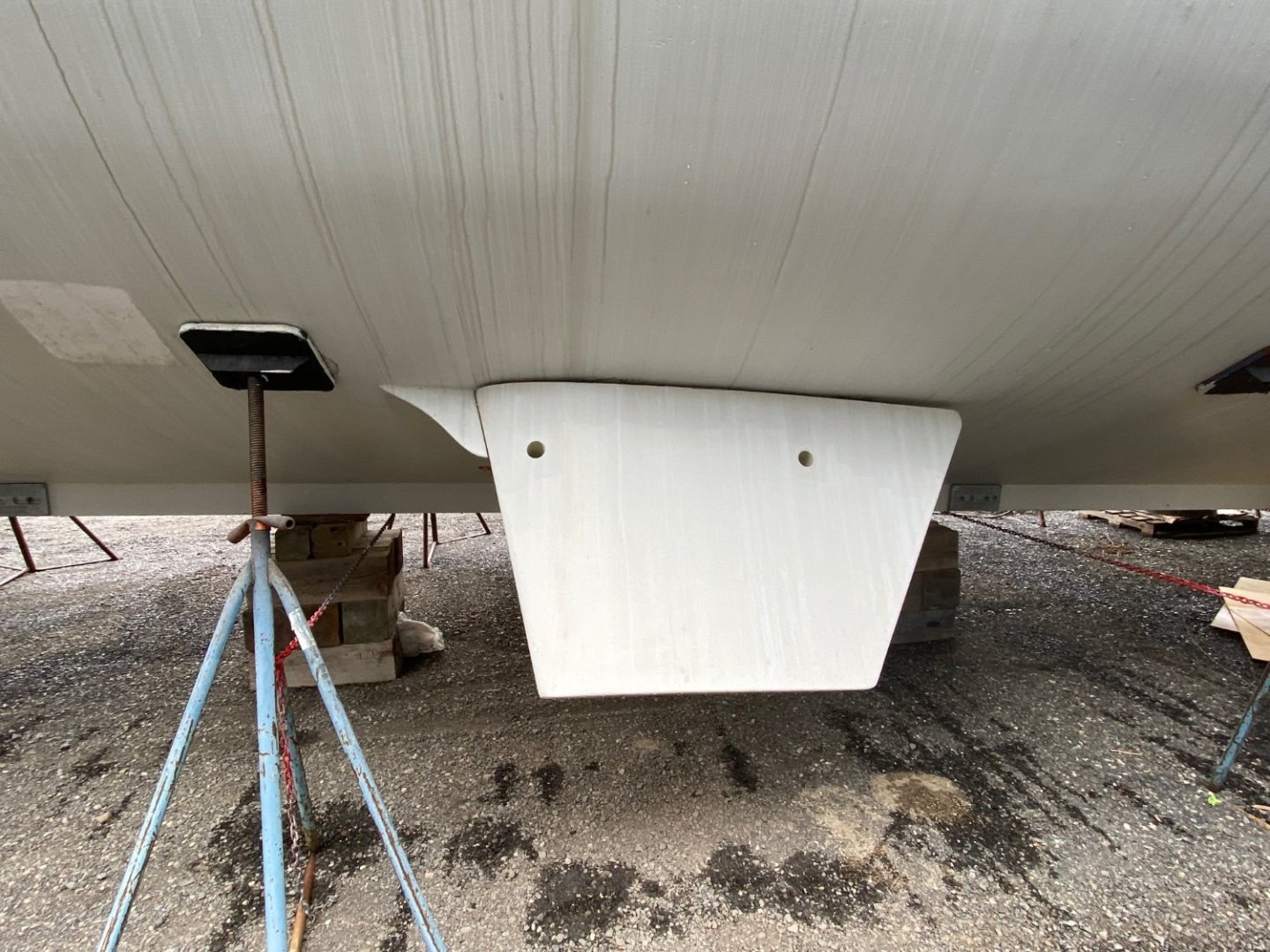-
Posts
3,906 -
Joined
-
Last visited
Content Type
Profiles
Forums
Gallery
Events
Everything posted by KeithAug
-
The aerodynamics of the prop leaves a lot to be desired. It looks like they made it out of some left over canoe paddles. It is surprising how light weight the framework is. Are you planning to install the bracing wires Greg? I think you are right about the colour of the frame.
- 288 replies
-
- Santos Dumont No. 18
- hydroplane
-
(and 1 more)
Tagged with:
-
In my experience annealed brass looks like brass. The silvering is a bit unusual. As for the shackles I find that I can get reasonably consistent shackles if I always start with a straight piece of wire cut to the finished length. The ends are bent round the tip of quite fine round nosed pliers, making sure the ring is centred on the straight section. (Most round nosed pliers tend to have jaws which are too big). The straight with hoops at both ends is then bent to create the U shape. The build is coming along quite nicely.
- 312 replies
-
- Chile
- Latin America
-
(and 6 more)
Tagged with:
-
Ah! I now understand, you are building the debugged version.🙂
- 732 replies
-
- Lula
- sternwheeler
-
(and 1 more)
Tagged with:
-
Not withstanding the angle debate, the stairs are very nicely made but on the photo of Lula they go up the side of the deckhouse. I have clearly misundersood something along the way.😕
- 732 replies
-
- Lula
- sternwheeler
-
(and 1 more)
Tagged with:
-
Glen, Rick, Keith, MCB, Ian, Eberhard, Pat - thank you all for your continuing support and thanks to everyone for all the likes and visits. Eberhard, I don't get very stressed about paint it's drilling holes in the hull that traumatises me. I have been making a bit of progress with the ships bow decoration. I had previously made the oval feature. I bought some .04" bearings to create the fringe. They were fixed in position with clear varnish. I then applied 3 coats of gold paint. I masked the carvings on the bow and painted them gold. I also did a bit of repair work to the paint. In one position the masking tape had covered the very edge of the reinforcing plate. I applied a further piece of tape and painted the edge by hand with a very fine brush. Then it was time to cut the hull from its building board. I used my pull saw to cut each frame in turn. It took a while but eventually the hull was free and in its building cradle. I now need to cut all the up-stands off.
-
That looks like it is worth following Eric.
- 393 replies
-
Yes Phil, things like that can be a problem. I once had to accompany a visitor on to a regulated nuclear site. His surname was Baranovich. I had hell of a job getting him through security.
- 410 replies
-
- minesweeper
- Cape
-
(and 1 more)
Tagged with:
-
Cold-hearted orb that rules the night Removes the colours from our sight Red is grey is yellow white But we decide which is right And which is an illusion
- 732 replies
-
- Lula
- sternwheeler
-
(and 1 more)
Tagged with:
-
I have spent a few days masking and spraying. Fortunately the workshop temperature has climbed to a balmy 49f / 9.5c. I completed the masking using a combination of Tamiya tape for the edges and blue painters tape for the less sensitive areas. The larger areas were covered with paper taped at the edges. I sprayed a white waterline band using Humbrol white enamel paint. I then masked off the watering band and exposed the 1/32" ply compensation plates. Having gone to all that trouble with varnishing the hull I have decided to go minimalist on the hull painting. The new plan is to paint the compensating plates green to match the hull colour. I can always paint the rest of the hull above the waterline if I don't like the result. Getting the right green wasn't easy but by mixing Humbrol Brunswick with Humbrol Black I was able to achieve something that looked near enough. The lighter green (arrow below) is Brunswick and the second arrow is the Brunswick / Black blend. I mixed plenty so that I didn't run out mid application. After leaving the paint to dry overnight I peeled off the tape. I paid a lot of attention to the tape edges before painting and thankfully the only bleed area was at the bow between the junction of the keel and the hull. I think I will be able to scrape off the bleed with a sharp blade before touching up with a little varnish. I don't think I need to paint the remainder of the hull above the waterline.
-
I have never had much success with paint - particularly on brass. No matter how well I prepare the brass the paint seems to be easily damaged or subsequently flakes off. If you do try painting and have success I would be interested to know what you did and details of the paint etc etc. Good luck.
- 312 replies
-
- Chile
- Latin America
-
(and 6 more)
Tagged with:
-
I also got quite excited by the boudoir look, alas my fantacies will have to be controlled.
- 732 replies
-
- Lula
- sternwheeler
-
(and 1 more)
Tagged with:
-
Phil - you clearly missed out on the late 60's early 70's "Flower Power" era!
- 410 replies
-
- minesweeper
- Cape
-
(and 1 more)
Tagged with:
-
John - Me neither for much of my life. I do however remember borrowing a Sinclair Scientific calculator for my finals in 1975 - a mere 50 years ago.😬😬. I also remember our first family B&W TV in 1958 - 67 years ago. I also remember being inspired to start my boat modelling career when I watched Noah working on his Arc.
-
A little more progress. At the front of the stabilisers are a couple of metal fillets - presumably to deflect debris from the gap between the stabiliser and the hull. I'm not sure why the holes in the stabilisers are for and I have omitted them in error. I'll need to go back and insert these. I cut the fillets from brass and included a web for mounting. Cutting the slot in the hull was another stressful operation - I marked the slot position with card. Before cutting the slot with an x-acto keyhole saw. I took my time to avoid damaging the hull varnish. The stabilisers and fillets were then Temporarily installed to test the fit. Then it was on to preparing for the paint job. Starting with the waterline stripe. I was having difficulty getting the waterline to sit at the correct height at bow and stern using the laser level. After some head scratching I realised that the bench wasn't perfectly horizontal. This of course wouldn't have been a problem if I had been marking the waterline with the traditional scribing block and pencil method. To sort the problem out I had to shim the base board at the bow. I also had to place a spirit level on the bench (as a track for the laser level), also shimmed to be horizontal. (See arrows). Having sorted the levelling problem I went on to mark the waterline by laying the masking tape directly to the laser line. After changing the height of laser I went on to mask the upper edge of the waterline. Of course I then had to turn the hull round and re-level before taping the other side. I didn't get any further with masking because I got the call for dinner. One must never delay when called by "she who must be obeyed" or the dinner will be in the dog.
About us
Modelshipworld - Advancing Ship Modeling through Research
SSL Secured
Your security is important for us so this Website is SSL-Secured
NRG Mailing Address
Nautical Research Guild
237 South Lincoln Street
Westmont IL, 60559-1917
Model Ship World ® and the MSW logo are Registered Trademarks, and belong to the Nautical Research Guild (United States Patent and Trademark Office: No. 6,929,264 & No. 6,929,274, registered Dec. 20, 2022)
Helpful Links
About the NRG
If you enjoy building ship models that are historically accurate as well as beautiful, then The Nautical Research Guild (NRG) is just right for you.
The Guild is a non-profit educational organization whose mission is to “Advance Ship Modeling Through Research”. We provide support to our members in their efforts to raise the quality of their model ships.
The Nautical Research Guild has published our world-renowned quarterly magazine, The Nautical Research Journal, since 1955. The pages of the Journal are full of articles by accomplished ship modelers who show you how they create those exquisite details on their models, and by maritime historians who show you the correct details to build. The Journal is available in both print and digital editions. Go to the NRG web site (www.thenrg.org) to download a complimentary digital copy of the Journal. The NRG also publishes plan sets, books and compilations of back issues of the Journal and the former Ships in Scale and Model Ship Builder magazines.








